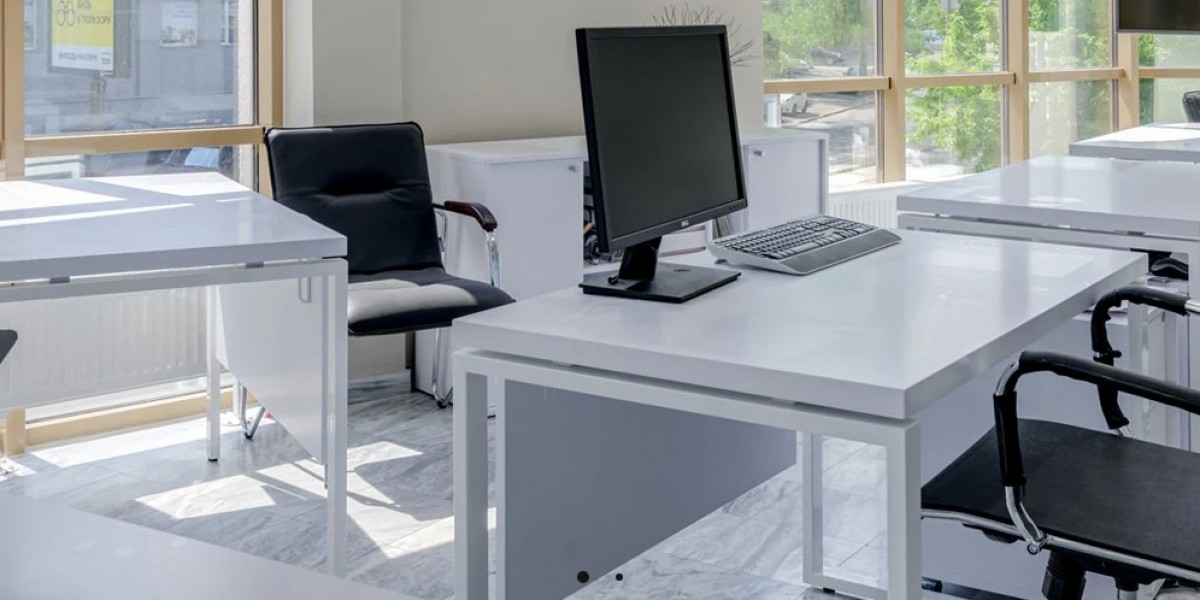Office tables play a significant role in boosting productivity by influencing how employees interact with their workspace and perform their tasks. A well-designed office table can enhance efficiency, comfort, and focus, contributing to a more productive work environment. Here are some key ways office tables can impact productivity:
Ergonomic Design
Promoting Good Posture:
- Ergonomically designed tables help maintain proper posture, reducing the risk of musculoskeletal issues such as back pain, neck strain, and carpal tunnel syndrome.
- Adjustable features, such as height settings and tiltable surfaces, allow employees to customize their workspace for optimal comfort.
Reducing Fatigue:
- Ergonomic tables minimize physical strain, allowing employees to work comfortably for extended periods.
- Sit-stand desks encourage movement and reduce fatigue by allowing users to alternate between sitting and standing positions.
Organization and Efficiency
Clutter-Free Workspace:
- Tables with integrated storage solutions, such as drawers and shelves, help keep the workspace organized and free from clutter.
- Efficient organization reduces time spent searching for documents or supplies, allowing employees to focus on their tasks.
Cable Management:
- Built-in cable management systems keep cords and wires tidy, reducing visual clutter and potential distractions.
- An organized workspace fosters a sense of order and efficiency, which can enhance concentration and productivity.
Technology Integration
Seamless Connectivity:
- Modern office tables often include power outlets, USB ports, and wireless charging capabilities, making it easy to connect and charge devices.
- Seamless technology integration ensures that employees have the tools they need readily available, reducing downtime and interruptions.
Accommodating Equipment:
- Tables designed to accommodate multiple monitors, laptops, and other technological equipment support a variety of work tasks and workflows.
- Adequate space for technology ensures employees can work comfortably and efficiently without feeling cramped.
Collaboration and Communication
Facilitating Interaction:
- Tables designed for collaboration, such as modular or round tables, encourage communication and teamwork among employees.
- Collaborative setups can foster creativity and innovation by making it easier for team members to share ideas and work together.
Flexible Configurations:
- Tables that can be easily reconfigured to suit different meeting or project needs promote adaptability and responsiveness to changing work demands.
- Flexibility in the workspace allows employees to transition smoothly between individual work and team collaboration.
Personalization and Motivation
Customization Options:
- Customizable tables enable employees to personalize their workspace according to their preferences, which can boost morale and motivation.
- Personalization allows individuals to create a comfortable and inspiring environment that enhances focus and productivity.
Aesthetic Appeal:
- Aesthetically pleasing tables contribute to a positive work atmosphere, which can have a motivating effect on employees.
- An attractive workspace can increase job satisfaction and encourage a sense of pride in one's work environment.
Health and Well-being
Encouraging Movement:
- Sit-stand desks and other ergonomic features encourage regular movement, which can improve circulation and reduce the negative effects of prolonged sitting.
- Regular movement and comfort contribute to overall well-being, which can enhance productivity and focus.
Reducing Stress:
- A well-organized and comfortable workspace can reduce stress and create a more pleasant work experience.
- Lower stress levels are associated with higher productivity and better overall performance.
Implementing Productive Office Tables
Assess Employee Needs:
- Conduct surveys or interviews to understand the specific needs and preferences of employees regarding their workspaces.
- Consider factors such as the nature of work, available space, and existing office design when selecting office tables.
Choose Appropriate Features:
- Select office tables with features that align with organizational goals and employee well-being, such as ergonomic adjustments and storage solutions.
- Provide a variety of options to accommodate different work styles and preferences.
Encourage Feedback and Adaptation:
- Regularly solicit feedback from employees to assess the effectiveness of office tables in boosting productivity.
- Be open to making adjustments or updates to the workspace based on employee input and evolving work requirements.
By investing in well-designed office tables that prioritize ergonomics, organization, technology integration, and personalization, organizations can create a productive work environment that supports employee well-being and enhances performance.






